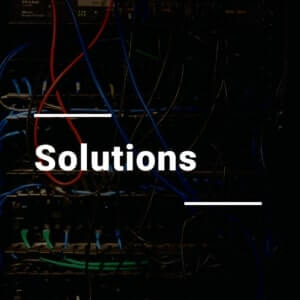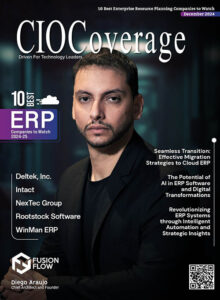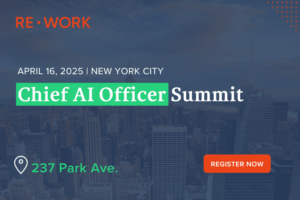 Data analytics is the process of using statistical analysis and data visualization to discover meaningful insights. This can help businesses answer important business questions like why employees are leaving, which employee groups are at risk of leaving, and which learning and development programs are working.
Data analytics is the process of using statistical analysis and data visualization to discover meaningful insights. This can help businesses answer important business questions like why employees are leaving, which employee groups are at risk of leaving, and which learning and development programs are working.
To perform HR analytics, you will need to collect the right kind of data. This can be a daunting task for professionals who lack analytical skills or have multiple different management and reporting systems to work with.
People Analytics
The goal of people analytics is to take HR data and use it to improve business processes, hiring decisions, and employee experiences. It uses a variety of tools like benchmarking solutions, visualization dashboards, and predictive analytics to identify trends and predict future outcomes.
People analytics is becoming increasingly important for HR departments as they transition from a supporting function to a strategic partner. Increasingly, employees expect their HR department to provide them with insights into their work performance and the company as a whole. This has resulted in many HR teams implementing people analytics technologies to meet these rising expectations.
These systems can provide a wealth of information, from data about the quality of the company’s candidates and employees to key metrics about the organization’s overall health. However, if the right team is not in place to interpret and utilize this information, it can be difficult to reap its benefits. HR leaders who have a strong background in analytics will be better equipped to understand the impact of their HR initiatives and how they align with the company’s business strategy.
As more companies invest in people analytics, the need for HR professionals with a strong background in analytics will become increasingly critical. These individuals can help ensure that the analytics platform is properly configured and used to deliver actionable and accurate results. They can also help to identify and mitigate potential bias in the system. For example, the ability of AI to notice patterns that humans often miss can lead to biased behaviors such as hiring or promoting only one particular race or gender. HR departments must be aware of this risk and work to ensure that the system is not influenced by any personal biases.
Ideally, people analytics should be integrated into the core HR functions and the entire company culture to create a true culture of data-driven decision-making. This will enable the organization to make informed choices and implement improvements that are based on verifiable evidence. To achieve this, organizations should ensure that the HR technology stack is optimized to handle a high volume of data and can quickly process and organize it. This may involve leveraging open-source software like Power BI, which allows you to connect and visualize multiple data sources, or more sophisticated software such as Tableau, which is more suited for advanced analysis.
Workforce Analytics
Workforce analytics is the management and interpretation of data that is focused on the employees of a company. It involves evaluating internal data, such as performance, and comparisons with external data, such as industry benchmarks or employment statistics. Successful workforce analytics management can help interpret trends, manage risks, and increase engagement within the organization.
The best way to leverage this type of data is by connecting it to an HR reporting metric, such as employee retention, attrition, or recruiting costs. The results can then be used to determine the impact of different strategies on business outcomes. In this way, HR leaders can be more effective at influencing business decisions by demonstrating how their talent strategy supports and aligns with the goals of the organization.
An important aspect of HR data analytics is establishing clear policies that govern the use of the data and how it is stored. This will help to ensure that the data is secure, that appropriate privacy rules are followed, and that everyone involved in workforce analytics understands their responsibilities for ensuring compliance.
It is also important to set clear goals for a workforce analytics project, such as what desired results are being sought and how they will be measured. This will help to ensure that the project is well-focused and delivers value to the business. Finally, it is important to establish clear roles and responsibilities for those who will be working with workforce data so that it is kept up-to-date at all times.
Using data analytics to enhance the workforce is an essential tool for modern businesses. It can save time and money by helping to make better-informed business decisions and improve the bottom line. Whether it is using data to predict staffing requirements, identify gaps in skills, or improve recruitment and retention strategies, the benefits are clear. However, it is important to remember that information alone won’t inspire change; the true power of data lies in its ability to be transformed into action. By empowering people with the right tools and the right skills, organizations can create a truly engaging workplace while still meeting their business needs.
Business Analytics
Before HR technology was available, people analytics involved collecting workforce data manually through surveys or employee interviews and then analyzing this data manually in spreadsheets. This was a time-consuming process that was difficult to track and prone to errors.
Workforce analytics solutions can automate this process and provide a much more accurate picture of the current state of your workforce. This allows you to identify areas for improvement and make data-driven decisions that are more likely to lead to success.
The most significant benefit of people analytics is that it provides a clear connection between HR-related efforts and business outcomes. This can be used to improve talent management and recruiting programs, foster successful workplace cultures, and ensure that the right people are in place to accomplish business goals and objectives.
Unlike traditional HR metrics that measure things like employee satisfaction, job performance, and productivity, these new metrics use data to make recommendations about how to improve processes and create business value. This is why it is important to communicate with strategic leaders within your organization (especially in the C-suite if possible) to understand what data should be collected and what types of analytics to apply to it.
Once you have your foundation in place with a strong HRIS and ATS that capture essential data, you can begin to explore different technologies to automate and analyze this data for actionable insights. There are many options on the market, but it is helpful to start with a simple tool like Microsoft Power BI or Tableau that can help you aggregate and visualize multiple data sources. More advanced tools may allow you to build your customizable dashboards or integrate them into other existing software for deeper analysis and visualizations.
Once you have your HR data analytics platform in place, it is vital to make sure the data is accessible to all stakeholders. This can be achieved by providing easy-to-use and interactive reports that can be easily understood by your team members and leadership. It is also important to educate your employees on why they are being asked to participate in these initiatives and the value of their participation. This will help to minimize any internal resistance and distrust of the system.
Predictive Analytics
Whether predicting whether someone will quit their job or how long it will take to complete certain tasks, predictive analytics helps HR managers identify problems before they happen. This information is used to streamline processes and reduce operational risks and costs.
A unified platform for data management and analytics gives employees more control over their information, and it also allows HR professionals to focus on building a culture of engagement and trust. Employees will feel more empowered at work if they can use their data to make decisions about their jobs, and that may reduce turnover, raise productivity levels and ultimately increase revenue.
With more responsibilities and data to manage, HR departments need tools to help them do their jobs better. They must have easy access to the latest research and technology to help them stay ahead of trends and provide quality service to employees. That is why the demand for HR technology that provides a better user experience has increased. HR leaders want tools that are easy to use and deliver a seamless digital employee journey through recruiting, onboarding, learning, or performance management systems.
In addition to making it easier for employees to find and use information, HR technology can help reduce the burden on HR departments by allowing them to automate and organize routine administrative tasks. This frees up time to focus on more strategic issues, including compliance exposure and data accuracy.
HR tech can also help businesses of any size meet the challenges presented by today’s global workforce and evolving legal landscape. For example, a centralized applicant tracking system can ensure that qualified candidates don’t slip through the cracks and that all applicants are treated fairly and equally. HR technology can also assist employers with comparing benefits programs costs and offerings to identify those that resonate with today’s workers.
It’s important to note that, as with any analytics tool, predictive algorithms need high-quality data to be effective. The best way to ensure that is to cleanse the data and then verify it against other sources. This will eliminate redundancies and erroneous results that can cause confusion or even misguide the company.















